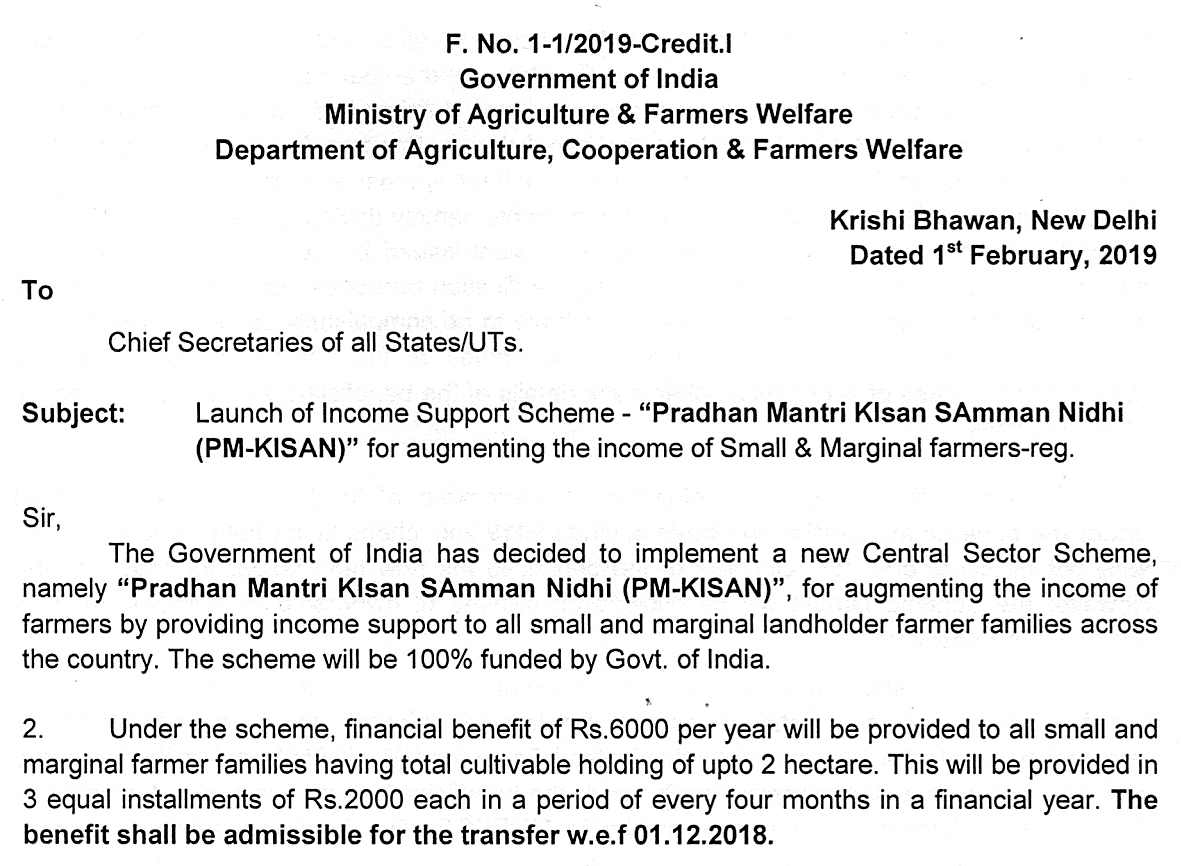The Modi government’s grand announcement of Rs 6,000 a year for small and marginal farmers owning land up to 2 hectares — which many critics see as a blatant cash-for-votes overture ahead of this year’s general election — is likely to stumble because of India’s patchy land records system.
The agriculture ministry, which is going to spearhead the scheme, had written to the states seeking farmer data to implement prior schemes but has not made much headway in its efforts to update records from a majority of the states.
Officials say they have written again seeking the records to try and create a database for the new scheme, unveiled in the interim budget on Friday. The Centre has yet to put together a list of the 12 crore beneficiaries of the Rs 75,000-crore-a-year dole scheme.
Officials say they are under pressure to identify the beneficiaries so that the Rs 20,000 crore earmarked for spending in this financial year, which ends on March 31, is paid to the farmers before the elections.
The agriculture secretary wrote to the chief secretaries of all the states on Friday, saying: “The existing land-ownership system in the concerned states and Union territories will be used for identification of beneficiaries. Those whose names appear in land records as on February 1, 2019, shall be eligible for benefit.”
Officials say this is really where the problem lies.
“Land records are incomplete in a very large number of districts in India and are certainly not updated in most districts,” said Biswajit Dhar, a professor at the Centre for Economic Studies and Planning, JNU.

The letter that was sent to the chief secretaries of all states The Telegraph picture
Despite a nationwide Digital India Land Records Modernisation Programme launched several years ago, only two states and three Union territories had completed the computerisation of their land records till last August.
Four states have yet to start the process. The remaining states are still computerising their records — and there is little chance that these records will be available for the new scheme to have any meaningful impact before the elections.
More important, mutation or transfer of ownership records had been computerised in only 50 per cent of all villages till August last year.
Title deeds do not exist for much of the farm holdings in tribal districts. Joint ownership by an extended family further complicates the problem of identifying the beneficiaries.
Inheritance, sales and gifts have often not been recorded or updated in the official records for decades. Surveys to update the map records of landholdings have been carried out in just 10 per cent of all villages.
“It will take at least six months to a year to complete such an exercise,” a top official said.
Bengal, one of the states to have announced a similar scheme that promises to give Rs 5,000 per acre to farmers, has been wrestling with the same problem. Approximately 41 per cent of its farmers do not figure in the updated records to be able to claim the dole.
“The best states in terms of land records till now are Karnataka, Telangana and Odisha,” said an agriculture ministry official. “After getting the names of the beneficiaries, we need to link them with Aadhaar cards and bank accounts in order to make direct cash transfers,” the official added.
So, what sounds nice in a budget speech falters when officials grapple with the harsh realities on the ground.
Officials admit that it will be a tall order for the government to be able to transfer Rs 2,000 per small farm owner, the first tranche of the income-transfer scheme, before April.
An earlier direct-transfer scheme for a fertiliser subsidy has remained on paper, with a committee still studying it despite pilot runs in a few districts.
As of now, firms claim the subsidy on the basis of their sales records. The point of sale of fertiliser tries to capture the buyer’s Aadhaar number and, if possible, land records. Officials admit this has yielded only sketchy records.
Economists and officials also admit that the latest scheme does not recognise a large section of farmers who should have benefited: the sharecroppers.
“The problem with the farmer-support scheme is that it ignores farm labour and sharecroppers and, hence, in terms of equity, it is lopsided,” said Dhar, the professor.
About 20 per cent of all farmers are sharecroppers while there are about 14.4 crore landless labourers.
“The bottom of the pyramid, which is the unhappiest and worst hit by the agrarian crisis, is going to remain outside the scope of this cash-transfer scheme,” an official admitted.












